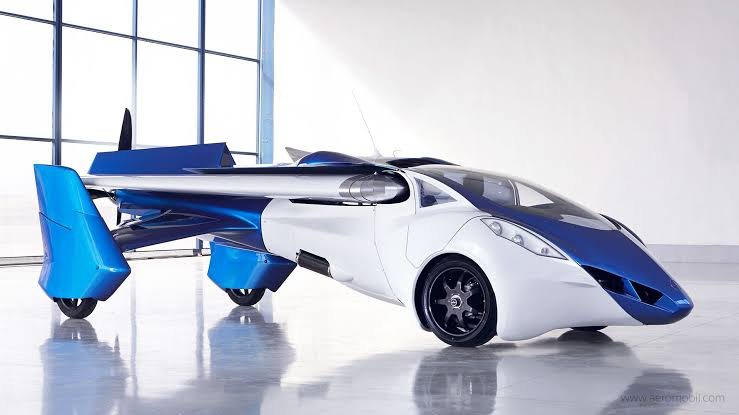There was a time when flying cars lived only in the dazzling frames of futuristic movies. From The Jetsons to Blade Runner, these hovering machines symbolized a dream society: one where traffic jams were a thing of the past, where highways stretched through the skies, and where humans had truly conquered all three dimensions of personal mobility.
But that dream is no longer science fiction.
Today, in test facilities, hangars, and air corridors around the world, flying cars are real, tangible, and being tested by companies you may not even have heard of. From electric vertical takeoff and landing (eVTOL) aircraft to hybrid driving-flying vehicles, the concept of urban air mobility is not only within reach—it’s already lifting off.
Flying cars, once the emblem of an unreachable tomorrow, are now poised to transform transportation as profoundly as the automobile or the airplane did in their time. But how close are we, really? What kinds of flying cars are being developed? What challenges still stand in the way? And what does a world with flying vehicles actually look like?
Strap in—this is your boarding pass to a future that’s no longer waiting.
Flying Cars: A New Breed of Vehicle
First, let’s clarify what we mean when we say “flying cars.” The term is a bit of a catch-all, used to describe a variety of emerging technologies in aerial mobility. At their core, these vehicles are meant to blend the convenience of automobiles with the freedom of flight.
But not all flying cars are the same.
Some are hybrids—cars that can drive on roads and fly when needed, switching modes like a Transformer. Others are more like autonomous air taxis, designed to pick you up from a rooftop and fly you across the city without ever touching a street.
The majority fall into the category of eVTOLs—electric vertical takeoff and landing aircraft. These resemble oversized drones or mini-helicopters, often with multiple rotors, and they promise quiet, efficient, and zero-emissions flight.
Regardless of form, the common goal is to revolutionize transportation by taking it into the air, offering fast, flexible, and potentially autonomous travel above ground-level congestion.
A Brief History of the Dream
The idea of flying cars isn’t new. In fact, it’s been tantalizing dreamers and engineers for over a century.
As early as the 1910s, inventors were experimenting with vehicles that could both drive and fly. In 1946, the Convair Model 118—a literal car with wings—made headlines with a test flight. The 1950s and ’60s saw a flurry of prototypes, many of which looked more like cars with gliders strapped to them than anything practical.
But none of them made it past the prototype stage. They were too heavy, too unstable, or simply not commercially viable. The materials and propulsion technologies of the time weren’t up to the task. The idea faded into the realm of fantasy.
It wasn’t until the 2010s that the dream began to resurface—this time powered by innovations in electric batteries, drone technology, computer control systems, and lightweight materials. Suddenly, what once seemed absurd was technologically plausible.
Why Now? The Perfect Storm of Innovation
The resurgence of flying car development isn’t happening in a vacuum. Several technological and social forces have converged to make it not only possible but inevitable.
Electric Propulsion: The rise of electric motors has made aircraft quieter, lighter, and easier to maintain. Unlike internal combustion engines, electric motors offer instant torque, multiple small rotors, and precise control—all ideal for vertical lift.
Battery Advances: Improvements in lithium-ion battery density now allow enough stored energy for short-range, zero-emission flights. While we’re not yet at the level needed for long-distance air travel, urban and suburban mobility is well within range.
Automation & AI: Autonomous flight systems, advanced sensors, and real-time obstacle detection have made it feasible to fly aircraft without a skilled pilot. Some future flying cars will require no human control at all.
Urban Congestion: Cities around the world are choking on traffic. As urban sprawl grows, the demand for faster, point-to-point transport is increasing. Air mobility offers a vertical escape route.
3D Navigation Systems: GPS, LIDAR, and AI-driven navigation enable precise, safe flying in complex urban environments. This three-dimensional traffic management is foundational to urban air mobility networks.
All these developments mean that flying cars are no longer held back by physics or fiction. The technology is here—what remains is integration, regulation, and acceptance.
Meet the Pioneers: The Companies Building the Future
Behind the sleek concept art and headline-grabbing test flights are real companies, many of them backed by major investors and aerospace giants.
Joby Aviation, for instance, has developed a sleek, electric air taxi capable of speeds up to 200 mph with a range of over 150 miles. Backed by Toyota and other major players, they aim to launch commercial services in major U.S. cities.
Volocopter, a German company, has been testing its multi-rotor aircraft for years. Their VoloCity is designed for short hops across crowded urban areas, and they’ve already conducted public demonstration flights.
Archer Aviation, Lilium, and Vertical Aerospace are other major contenders, each developing their own eVTOL aircraft tailored to different segments—commuter flights, intercity travel, or even cargo delivery.
Then there’s Terrafugia, originally a startup spun off from MIT, which is working on a car-airplane hybrid that can both drive on roads and take to the skies—a literal flying car.
These aren’t prototypes stuck in laboratories. They’re real vehicles, many of them FAA-approved for test flights, some with projected commercial operations within the next few years.
Taking Off from the Driveway: Flying Cars for the Masses?
The idea of having your own personal flying car parked in your garage is still more dream than reality—but it’s getting closer.
Several companies are targeting the consumer market, designing small, user-friendly aircraft that could be flown (or at least ridden in) by regular people.
Imagine a morning commute where you hop into your two-seat electric aircraft, punch in a destination, and the vehicle autonomously lifts off, cruising silently above the gridlock before landing at a rooftop pad near your office. That’s not just concept art—that’s what startups like PAL-V, SkyDrive, and AeroMobil are building toward.
However, personal flying cars face steeper challenges than commercial air taxis. Safety regulations, pilot licensing, air traffic control, insurance, and vehicle cost are all hurdles that must be overcome before mass ownership becomes viable.
But if history has taught us anything—from the Wright brothers to the iPhone—it’s that transformative technology often starts expensive and niche, then becomes accessible and ubiquitous.
Safety in the Sky: Can We Trust Flying Cars?
One of the biggest questions surrounding flying cars is safety. After all, crashing on the ground is bad enough—what about crashing from hundreds of feet in the air?
Safety is paramount, and most flying car developers are working with aviation authorities like the FAA (U.S.) and EASA (Europe) to meet or exceed existing aircraft safety standards.
Unlike helicopters, eVTOLs are designed with multiple redundant rotors, meaning if one or two fail, the vehicle can still land safely. Autonomous control systems reduce human error, which is a leading cause of traditional aviation accidents.
Many designs also include ballistic parachutes, auto-landing features, and real-time fault monitoring. The goal isn’t just to make them as safe as commercial planes—it’s to make them safer than cars.
The real revolution in safety comes from software. AI-driven air traffic management systems will prevent collisions, assign flight corridors, and monitor every aircraft in real time, creating a layered, responsive, and incredibly intelligent sky highway.
The Sky Highway: Managing 3D Traffic
Perhaps the greatest challenge is not the vehicle—but the system that supports it.
Urban air mobility (UAM) requires an entirely new infrastructure: takeoff and landing pads (called “vertiports”), maintenance facilities, charging stations, and—most critically—air traffic control for low-altitude airspace.
NASA, the FAA, and other agencies are already working on frameworks for managing this 3D traffic. Instead of traffic lights, the sky will be governed by AI algorithms, predictive flight planning, and constantly updating weather and obstacle data.
Picture it: a quiet sky filled with dozens or hundreds of flying vehicles, each gliding along invisible lanes, changing altitude as needed, and rerouting around storms—all without a human pilot at the controls.
It sounds like a logistical nightmare, but it’s not unlike how we already manage millions of cars on roads and thousands of planes in the air each day. The challenge is steep, but solvable—and work is well underway.
Environmental Impact: A Greener Way to Fly?
At first glance, flying cars might seem like an environmental disaster. More vehicles in the sky? More energy used? More emissions?
Surprisingly, many flying car projects aim to be not just efficient—but eco-friendly.
Electric propulsion means no direct emissions. Many eVTOLs are designed to be quieter than helicopters—almost whisper-silent—which reduces noise pollution in cities. And because air travel is point-to-point, it eliminates much of the stop-and-go idling that makes car travel so inefficient.
In fact, a short hop in a flying car could use less energy than the same trip by car in heavy traffic. Over time, as battery technology improves and charging is powered by renewables, flying cars could be a net environmental benefit—especially in areas with poor ground infrastructure.
That said, large-scale adoption must be carefully managed. Battery production, land use for vertiports, and energy demands must be balanced to ensure a sustainable future.
Culture Shock: Are We Ready for Flying Cars?
Even if flying cars were safe, legal, and affordable tomorrow—would people use them?
The shift from ground to air mobility isn’t just a technological one—it’s cultural. People will need to trust automated flying machines. They’ll need to feel comfortable boarding a pod that lifts off vertically and sails over skyscrapers. And society will need to adapt to the visual, acoustic, and psychological impact of vehicles in the sky.
Think about the backlash drones received when they became common. Now imagine hundreds of human-sized drones above your city.
Public education, smart policy, and community involvement will be key to ensuring that flying cars integrate into our lives as tools of convenience—not sources of anxiety.
Still, the appeal is undeniable. Who wouldn’t want to skip rush-hour gridlock with a quiet, fast flight over the chaos?
Tomorrow’s Commute: What the World Might Look Like
Let’s imagine a typical morning in the year 2040.
You wake up, grab a coffee, and check your phone. Traffic’s heavy on the ground—but your personal air taxi app shows a clear sky. You schedule a pickup from the rooftop pad of your apartment. Ten minutes later, a sleek, electric pod descends, its rotors nearly silent. The doors open. No pilot inside.
You step in, fasten your seatbelt, and the vehicle lifts off. Beneath you, the city crawls. Above, birds drift by. In five minutes, you’ve crossed a river, zipped past four neighborhoods, and landed on the roof of your office building.
Your day begins—not stressed, not delayed, but elevated.
This isn’t a fantasy. It’s the direction we’re heading. Not tomorrow. Maybe not even in five years. But sooner than most expect.
Final Approach: The Dawn of a New Era
Flying cars have been the stuff of dreams for over a century. They’ve inspired generations of inventors, engineers, and dreamers. Today, those dreams are coalescing into something tangible, functional, and within reach.
They won’t replace all cars. They won’t eliminate roads. They won’t make traffic jams vanish overnight. But they will add a new layer to human mobility—one that rises above the noise and opens new possibilities for how we live, move, and connect.
The first wave will be expensive, rare, and limited to specific cities. But like all transformative technology, what begins as a luxury will become a necessity, then a norm. In time, flying cars will be as unremarkable as smartphones or electric scooters.
The age of aerial mobility is no longer a sci-fi myth.
It’s lifting off.





